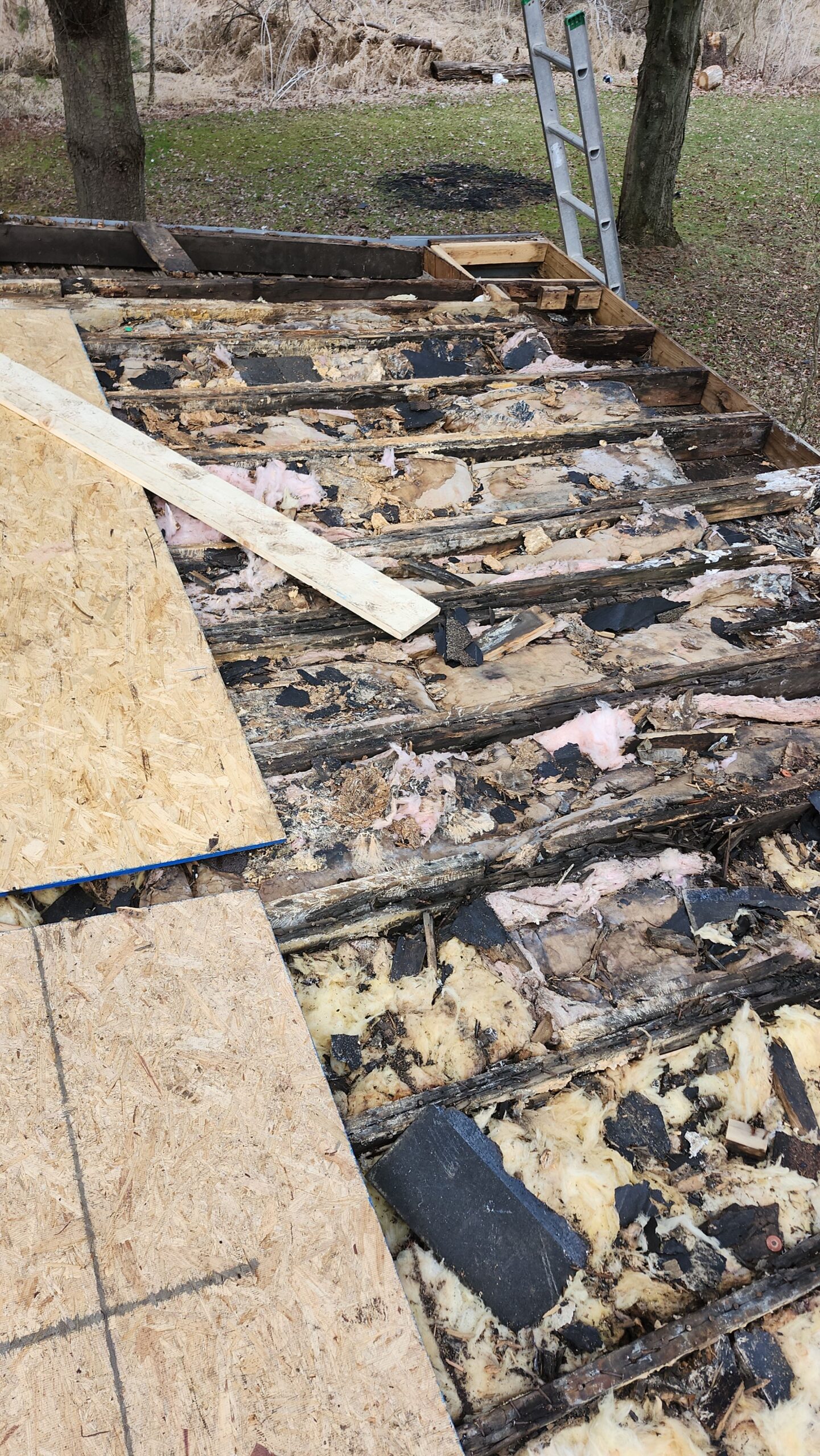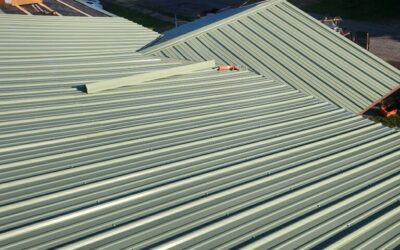“Why Is My Ceiling Leaking? Causes, Solutions, and What to Do Next”, written with a focus on keyword optimization for “why is my ceiling leaking,” and localized for Northeast Ohio. It features your company, S&K Construction and Remodeling LLC, as the go-to roofing and remodeling contractor in the region.
Why Is My Ceiling Leaking? Causes, Solutions, and What to Do Next
By S&K Construction and Remodeling LLC – Trusted Roofing Experts Serving Northeast Ohio
A leaking ceiling can send any homeowner into panic mode. One minute everything is fine—and the next, you’re staring up at a spreading water stain, bubbling paint, or worse, active dripping. If you’re asking yourself, “Why is my ceiling leaking?”, you’re not alone. Ceiling leaks are a common issue in homes across Northeast Ohio, especially during stormy seasons and heavy snow melts.
In this detailed guide, we’ll explore everything you need to know:
- The top causes of ceiling leaks
- How to identify where the leak is coming from
- The dangers of ignoring a leak
- Temporary solutions to stop the damage
- Long-term repair strategies
- When to call the pros
- Why S&K Construction and Remodeling LLC is the right choice
Let’s break down what’s going on—and what to do about it.
Why Is My Ceiling Leaking? The Most Common Reasons
Water leaking from the ceiling is always a symptom of a bigger issue. The source could be your roof, plumbing, HVAC system, or something as simple as poor insulation. Here’s a deep dive into the most common causes:
1. Roof Damage
The #1 cause of ceiling leaks we see in Northeast Ohio is a damaged roof.
This includes:
- Missing or damaged shingles
- Cracked flashing
- Clogged gutters
- Ice dams
- Roof valleys and chimney problems
A storm, heavy wind, or aging shingles can allow water to seep in, especially if your attic has poor ventilation or insulation.
2. Leaking Plumbing Pipes
If your ceiling leak appears near a bathroom or kitchen—or on the lower level beneath a second-floor bathroom—the culprit may be leaking pipes.
This could be due to:
- Worn-out pipe joints or seals
- Clogged drains causing overflow
- Leaky toilet supply lines or shut-off valves
- Bathtub or shower leaks
Plumbing leaks are tricky because they may not show up immediately and can cause long-term moisture buildup behind your walls or ceiling.
3. HVAC Issues and Condensation
Air conditioning units, especially those located in attics or crawlspaces, can generate condensation that leaks into ceilings if the drainage system is clogged or the unit malfunctions.
Other HVAC-related ceiling leaks can stem from:
- Overflowing drip pans
- Broken condensate pumps
- Poorly insulated ducts that sweat in summer
4. Attic Condensation or Ice Dams
In winter, if your attic isn’t properly insulated and ventilated, warm air can rise and cause snow on the roof to melt. This water can refreeze at the edges, forming ice dams. Water then backs up under your shingles, leaking into the attic and ceiling.
5. Clogged Gutters or Poor Drainage
If water can’t drain properly off your roof, it may pool and force its way under shingles or into the fascia and soffits. This kind of damage can cause water to seep into your ceilings and walls.
6. Cracked or Missing Caulking Around Roof Penetrations
Skylights, chimneys, vent pipes, and other penetrations are prone to leaking if the sealant fails. This leads to small but persistent ceiling leaks.
How to Tell Where the Leak Is Coming From
You may be wondering: Is the leak coming from the roof or a plumbing pipe? Here’s how to tell:
Signs of a Roof Leak:
- Leak appears after heavy rain or snow
- Ceiling is leaking in the attic or top floor
- You see water stains in corners or near walls
- Mold or mildew smell in the attic
- Roof is older or missing shingles
Signs of a Plumbing Leak:
- Leak shows up near bathrooms or kitchens
- Water appears even when it hasn’t rained
- Ceiling leaks directly beneath pipes or fixtures
- You hear dripping sounds between walls
- Water meter changes even when no water is being used
If you’re not sure, it’s always best to get a professional inspection to determine the true cause.
What Happens If You Ignore a Leaking Ceiling?
Delaying repairs on a leaking ceiling can cause:
- Mold growth
- Structural damage to rafters, drywall, and insulation
- Electrical hazards if water reaches wiring
- Increased utility bills due to damaged insulation
- Worsened leaks over time, leading to more expensive repairs
Quick action saves time and money.
Temporary Solutions: What to Do Right Now
While you’re waiting on a professional, take these steps:
- Contain the leak – Use a bucket or container to catch water.
- Relieve pressure – If the ceiling is bulging, puncture it with a small hole to prevent collapse.
- Protect belongings – Move furniture and electronics out of the affected area.
- Dry the area – Use fans and towels to minimize moisture spread.
- Shut off water supply – If you suspect a plumbing leak, turn off the water.
- Take photos – Document everything for your insurance provider.
Long-Term Solutions: How to Fix a Ceiling Leak
The fix depends on the cause.
✅ If It’s a Roof Leak:
- Replace missing or damaged shingles
- Reseal flashing around chimneys, vents, and skylights
- Install proper attic ventilation
- Clean gutters and downspouts
- Add ice and water shields if necessary
A full roof inspection may be needed to assess the extent of the damage.
✅ If It’s a Plumbing Leak:
- Replace or reseal pipes and fittings
- Fix cracked toilets, tubs, or drains
- Install proper waterproofing and insulation
✅ If It’s an HVAC Issue:
- Unclog or repair the condensate drain line
- Replace overflow pans
- Insulate sweating ducts
✅ If It’s Gutter or Exterior Drainage:
- Clean and repair gutters and downspouts
- Add splash guards or downspout extensions
- Fix any grading issues that pool water near the foundation
How to Prevent Ceiling Leaks in the Future
🛠 Roof Maintenance:
- Schedule annual inspections
- Clean gutters every season
- Remove overhanging branches
- Install ice and water barriers
💧 Plumbing Checks:
- Check for corrosion or moisture around fixtures
- Insulate pipes during cold weather
- Fix slow leaks immediately
🌬 HVAC Maintenance:
- Clean and inspect HVAC units twice a year
- Replace air filters
- Ensure condensation lines are draining properly
Insurance Coverage for Ceiling Leaks
In many cases, homeowners insurance will cover water damage from sudden events like storms or burst pipes—but not from neglect or wear and tear.
That’s why S&K Construction and Remodeling LLC helps clients with:
- Damage documentation
- Insurance claims
- Written estimates
- Meeting with adjusters
We help make the process as painless as possible.
Why Choose S&K Construction and Remodeling LLC?
We’ve built our reputation in Northeast Ohio by providing high-quality, trustworthy roofing and remodeling services in cities like:
- Youngstown
- Twinsburg
- Lyndhurst
- Medina
- Willoughby
- Chardon
- And surrounding areas
As an Owens Corning Preferred Contractor, we’re certified, licensed, and insured to handle all your roof and leak repair needs. Our services include:
- Leak inspections
- Emergency roof tarping
- Full roof replacement
- Attic insulation
- Drywall repair
- Siding and gutter solutions
We also offer financing options to make repairs more affordable.
Don’t Wait—Fix That Leak Today
If you’re seeing water spots, sagging drywall, or ceiling drips, don’t ignore it. The longer you wait, the worse (and more expensive) the damage becomes. At S&K Construction and Remodeling LLC, we take every call seriously and work quickly to stop leaks at the source.
⭐⭐⭐⭐⭐ 5-Star Google Reviews
“S&K Construction responded fast when we found a leak in our attic. They were professional, on-time, and fixed the problem for good. Highly recommend!” – Marcia T., Chardon, OH
“Our roof had storm damage and water was coming into our ceiling. These guys were amazing. They handled everything with our insurance. Excellent service!” – Jason B., Twinsburg, OH
Contact Us Today
S&K Construction and Remodeling LLC
📍 Based in Youngstown, Ohio | Serving All of Northeast Ohio
📅 Free Estimates | Insurance Claims Welcome | Financing Available
Still asking, “Why is my ceiling leaking?” Call the pros who know.
We’ll find it, fix it, and prevent it from happening again.
Would you like this formatted for your website or posted as a Google Business article?
 (440) 307-2060
(440) 307-2060



